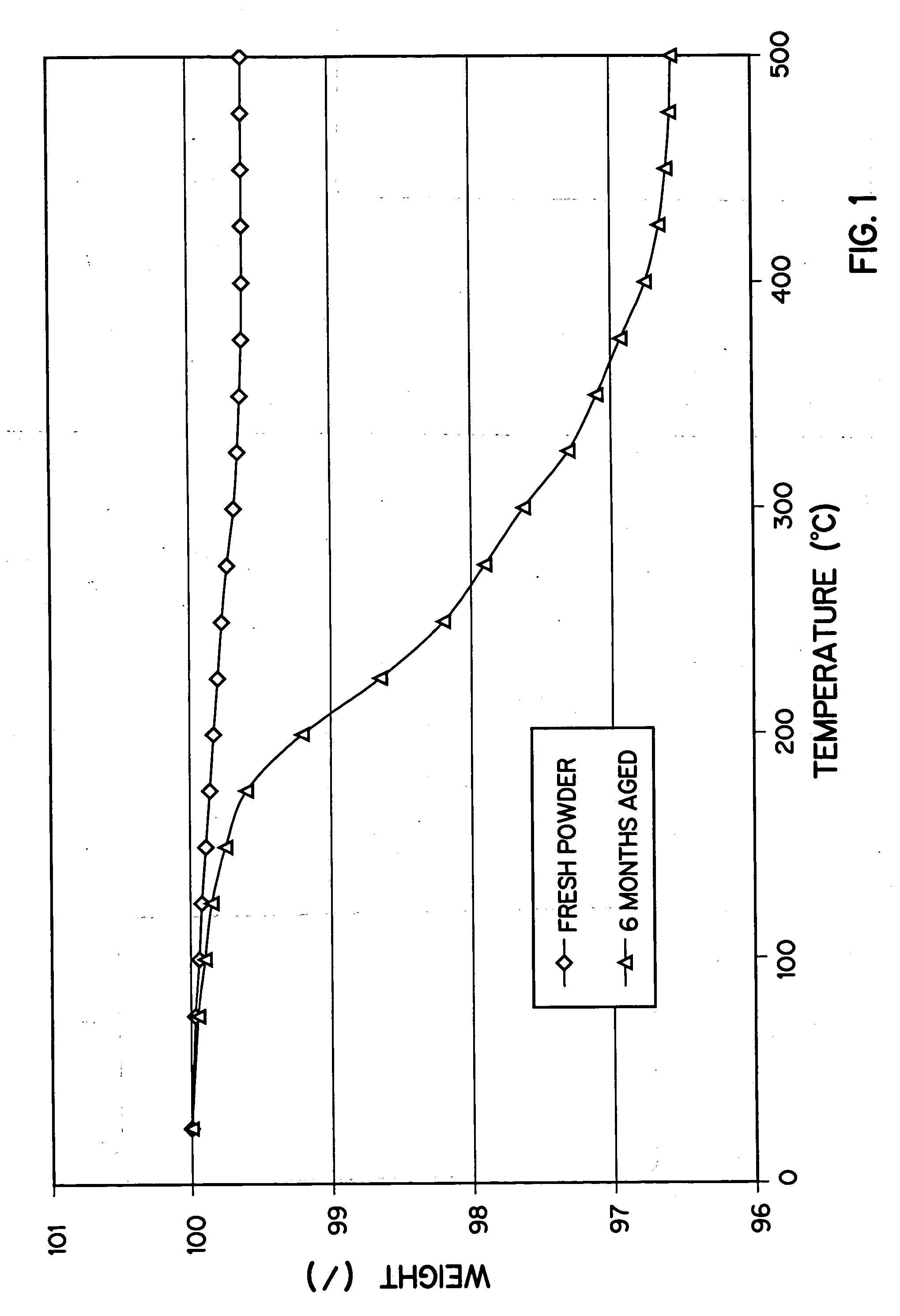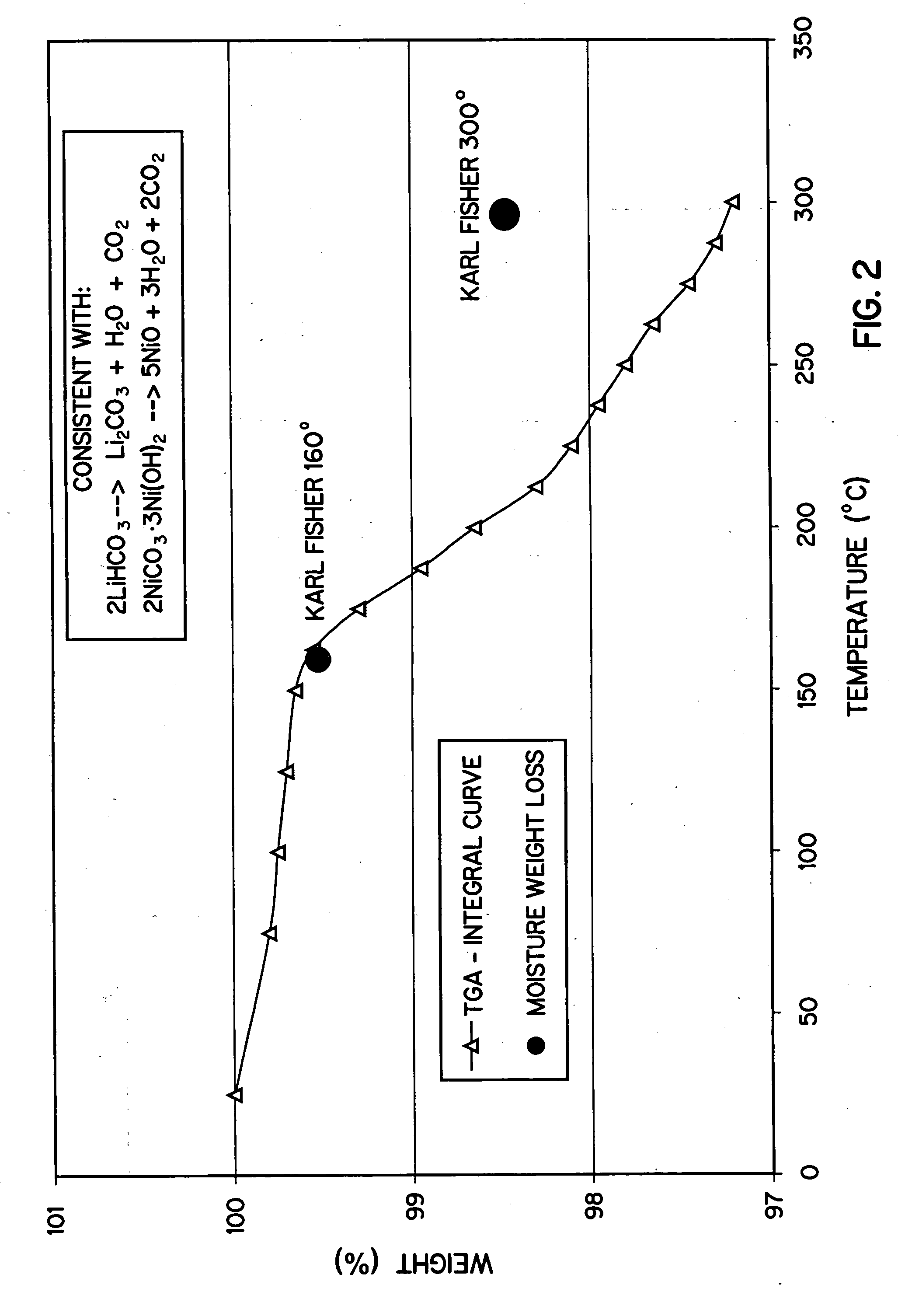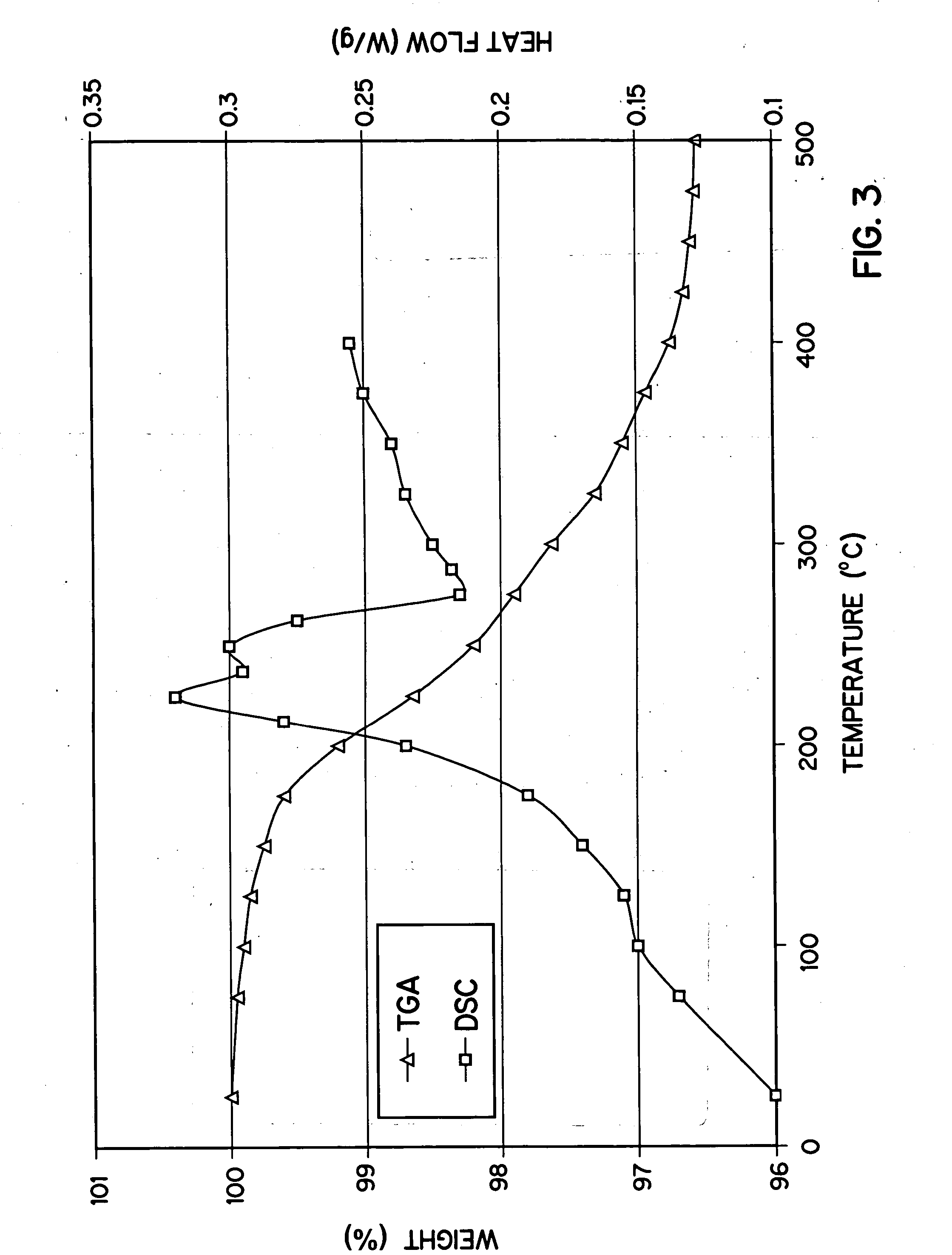Method of preparation of positive electrode material
a positive electrode material and positive electrode technology, applied in the direction of nickel compounds, non-aqueous electrolyte cells, cell components, etc., can solve the problems of reducing the cycle and calendar life of the cell, absorbing a significant amount of moisture, and high hygroscopicity, so as to improve the cycle life and calendar life of the lithium-ion cell, significantly reducing gassing, and reducing the moisture content of the compound
- Summary
- Abstract
- Description
- Claims
- Application Information
AI Technical Summary
Benefits of technology
Problems solved by technology
Method used
Image
Examples
example 1
A lithium-ion PVDF polymer 20 cm2 Bellcore-type test cell was used where the positive electrode was treated in accordance with the present invention. An Al doped LiCo0.2Ni0.8O2 positive electrode and a natural graphite negative electrode were used for cell preparation. The LiCo0.2Ni0.8O2 positive electrode material was first heated at 100° C. with an air / CO2 mixture containing 50% CO2 for 18 hours and then heated at 300° C. for 8 hours in accordance with the present invention. The treatment was performed immediately before positive electrode preparation. The two electrodes were separated with a polypropylene-based polymer separator. The cell was activated with 1 M LiPF6 electrolyte dissolved in EC:EMC (ethylene carbonate:ethyl-methyl carbonate). The cell was then hermitically closed and electrochemically formed by 3 cycles at a charge-discharge rate of C / 5 (i.e., current=cell capacity / 5 hours). The cell was then subjected to cycle life characterization at 55° C. using a C / 2 charge-...
example 2
Lithium-ion PVDF polymer 20 cm2 experimental cells were prepared according to the present invention as described in Example 1, but with the Al doped LiCo0.2Ni0.8O2 positive electrode material first heated at 100° C. with an air / CO2 mixture containing 1% CO2 for 18 hours and than heated at 300° C. for 8 hours immediately before positive electrode preparation in accordance with the present invention. The cells were then subjected to calendar life characterization at 55° C. using a C / 2 charge-discharge rate. The calendar life performance of the cells prepared using the method of the present invention is shown in FIG. 8.
Reference cells with the same chemistry described above but with a positive electrode material used as received were used for comparative measurement. The cells were subjected to calendar life characterization at 55° C. and a C / 2 rate, as with the cell with treated positive electrode material according to the present invention. The calendar life performance of these r...
example 3
Lithium-ion PVDF polymer 20 cm2 experimental cells were prepared according to the present invention as described in Example 1, but with the positive electrode material treated with a gas mixture containing 1% CO2, 21% O2 and 78% N2 for 24 h at 300° C. The cells were then subjected to cycle life characterization at 55° C. and a C / 2 rate. The cycle life-performance of the cells prepared using the method of the present invention is shown in FIG. 9.
Reference cells with the same chemistry described above but with a positive electrode material used as received were used for comparative measurement. The cells were subjected to cycle life characterization at 55° C. using a C / 2 charge-discharge rate, as with the cells prepared according to the present invention. The cycle life performance of the reference cells is also shown in FIG. 9. The cell with treated positive electrode material according to the present invention exhibits substantially better cycle life performance than the referenc...
PUM
| Property | Measurement | Unit |
|---|---|---|
| partial pressure | aaaaa | aaaaa |
| temperature | aaaaa | aaaaa |
| partial pressure | aaaaa | aaaaa |
Abstract
Description
Claims
Application Information
 Login to View More
Login to View More - R&D
- Intellectual Property
- Life Sciences
- Materials
- Tech Scout
- Unparalleled Data Quality
- Higher Quality Content
- 60% Fewer Hallucinations
Browse by: Latest US Patents, China's latest patents, Technical Efficacy Thesaurus, Application Domain, Technology Topic, Popular Technical Reports.
© 2025 PatSnap. All rights reserved.Legal|Privacy policy|Modern Slavery Act Transparency Statement|Sitemap|About US| Contact US: help@patsnap.com



